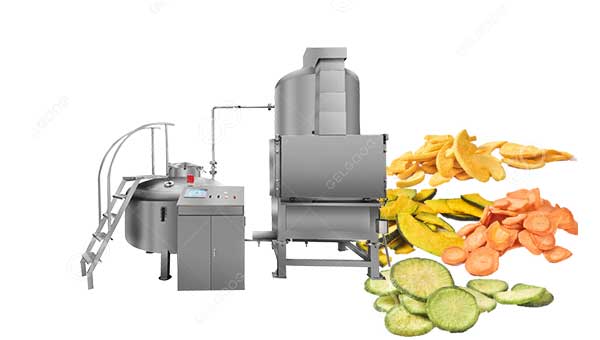In recent years, the food industry has witnessed significant advancements in processing technologies. One such innovation that has revolutionized the way we process food is the vacuum frying machine. This cutting-edge equipment has gained widespread popularity due to its ability to produce healthier, tastier, and more nutritious fried products. In this article, we will explore what is the principle of vacuum frying machine and understand why it has become a game-changer in the food processing industry.

Understanding the Vacuum Frying Process
Traditional frying methods involve immersing food items in hot oil, which causes the food to absorb a substantial amount of oil, leading to high fat content and decreased nutritional value. However, the vacuum frying machine operates on a fundamentally different principle, combining the benefits of vacuum technology with frying.
The vacuum frying process involves placing the food into the frying chamber and creating a vacuum environment by removing air and reducing pressure. The atmospheric pressure inside the chamber drops significantly, causing the boiling point of water to decrease. As a result, the water inside the food starts to evaporate at lower temperatures, usually around 70-80°C (158-176°F), which is much lower than the standard frying temperatures.
The Principle of Low-Temperature Frying
The lower frying temperature is a crucial aspect of the vacuum frying principle. It helps preserve the heat-sensitive nutrients, flavors, and colors of the food, which would otherwise be lost or degraded at higher temperatures. By frying at lower temperatures, the formation of harmful compounds, such as acrylamide, is also reduced, making vacuum-fried products healthier and safer for consumption. Additionally, the low temperature allows the food to retain its original shape and texture, preventing excessive shrinkage and maintaining a crispy yet tender texture.
Oil Uptake Reduction
One of the most significant advantages of vacuum frying is its ability to reduce oil uptake in the fried products. The low temperature and vacuum environment prevent the food from absorbing excess oil, resulting in products with significantly lower fat content compared to traditional frying methods. This makes vacuum-fried foods more appealing to health-conscious consumers who want to enjoy their favorite snacks with reduced guilt.
Uniform Frying
In conventional frying, the food items are often subjected to non-uniform heating, leading to uneven frying and an inconsistent end product. However, the vacuum frying machine ensures uniform heat distribution within the frying chamber, resulting in evenly fried products with consistent quality, texture, and taste.
Extended Shelf Life
Vacuum-fried products generally have a longer shelf life compared to traditionally fried items. The reduced oil content and the preservation of heat-sensitive nutrients contribute to the products’ extended freshness, making them a preferred choice for manufacturers aiming to improve the shelf life of their food products.
The principle of the vacuum frying machine has transformed the way we perceive and consume fried foods. Through low-temperature frying in a vacuum environment, this technology preserves the natural goodness of food, reduces oil uptake, and produces healthier, tastier, and more appealing fried products. As consumer demands for healthier options continue to rise, the vacuum frying machine stands at the forefront of innovation, driving the food industry towards a more sustainable and nutritious future.